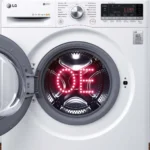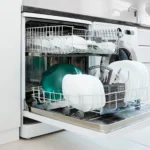If your oven isn’t heating up properly, it’s crucial to identify the root cause of the problem as soon as possible. A malfunctioning oven can interfere with your cooking and cause frustration. In this guide, we’ll walk you through common oven heating problems, troubleshooting tips, and how to fix them so that you can get your oven back to working condition.
Our Appliance Repair Services:
Microwave Repair Service in Southern CaliforniaWasher Repair Service in Southern California
Freezer Repair Service in Southern California
Dishwasher Repair Service in Southern California
Refrigerator Repair Service in Southern California
Common Oven Heating Problems
Oven heating problems can occur due to various issues with the appliance’s internal components. Here are some of the most common reasons why your oven might not be heating correctly:
1. Faulty Heating Element
The heating element generates heat in your oven, and if it’s damaged or burnt out, the oven won’t reach the set temperature. Signs of a faulty heating element include uneven heating, unusual sounds, or a complete lack of heat.
Solution: If you notice visible damage or the oven fails to heat, you’ll likely need to replace the heating element.
2. Damaged Temperature Sensor
The temperature sensor monitors the heat inside the oven and sends this information to the thermostat. A faulty sensor can cause the oven to overheat or not reach the desired temperature.
Solution: Inspect the sensor for any visible signs of damage. If the sensor is not working properly, replacing it should resolve the issue.
3. Burnt Out Thermostat or Selector Switch
The thermostat controls the oven temperature, and the selector switch adjusts the cooking modes (bake, broil, etc.). A faulty thermostat can cause inaccurate temperature readings, while a malfunctioning selector switch may prevent the oven from heating properly.
Solution: Use a multimeter to test the thermostat for continuity. If it’s defective, replacing it will likely fix the problem.
4. Faulty Control Board
The control board acts as the brain of the oven. If it malfunctions, it can stop the oven from heating, even when all other components are working correctly.
Solution: A faulty control board often requires professional repair or replacement. If your oven’s display is not working or not responding, this could be the issue.
5. Defective Igniter (For Gas Ovens)
In gas ovens, the igniter’s role is to ignite the gas, creating the heat needed for cooking. If the igniter is damaged, the oven won’t heat, even though the gas valve is working.
Solution: Inspect the igniter for any cracks or signs of wear. If defective, replacing it should restore heat to your oven.
Why Is My Oven Blowing Cold Air?
If your oven is blowing cold air instead of hot, there could be several reasons for this issue:
– Malfunctioning Heating Element: As mentioned earlier, a faulty heating element can prevent your oven from generating heat.
– Temperature Sensor Problems: If the temperature sensor isn’t communicating correctly with the oven, it might cause the oven to run in an incorrect cycle, resulting in cold air.
– Broken Fan: For fan-assisted ovens, a broken fan may prevent hot air circulation, causing cold air to blow instead of warm.
Solution: Check the heating element, temperature sensor, and fan motor to identify the malfunction. Replacing these parts will fix the cold air issue. Get Riyadh AC Repair Service
Why Is My Oven Not Heating Up, But the Fan Is Working?
If your oven’s fan is running but there’s no heat, it could suggest an issue with the heating element or thermostat. These components control the heating function in your oven, and when they fail, the fan might still run without producing heat.
Solution: Start by testing the heating element. If it’s intact, move on to checking the thermostat or temperature sensor. Replacing these components should solve the issue.
What Controls the Heat in an Oven?
Several key components control the heat in an oven:
– Heating Elements: These are responsible for producing heat in electric ovens.
– Temperature Sensor: This component measures the temperature inside the oven and ensures the heating element is turned on or off at the correct times.
How to Fix an Oven That’s Not Heating Up
Step 1: Check the Heating Element
For electric ovens, the heating element is usually the first place to look. Check the heating element for visible signs of damage or burning. Then, a multimeter is used to test for continuity; if continuity is absent, the element is defective and needs replacement.
Step 2: Inspect the Temperature
Sensor: If your oven is not heating evenly or the temperature is fluctuating, the temperature sensor may be at fault.
Step 3: Test the Thermostat
The thermostat controls the oven’s temperature. If the oven doesn’t heat or overheats, it may be defective.
Step 4: Check the Control Board
If the above components seem fine, but the oven still isn’t heating, the issue might be with the control board. A malfunctioning control board will require replacement, and you may need a professional technician to handle this repair.
How to Prevent Oven Heating Problems
To avoid frequent oven heating issues, consider these preventive tips:
– Calibrate Your Oven Regularly: Regular calibration can prevent temperature discrepancies.
– Clean Heating Elements and Fans: Dust and food buildup can impact heating efficiency. Clean your oven’s heating elements and fans regularly.
– Inspect Oven Components: Regularly inspect the heating element, temperature sensor, and thermostat for any signs of wear and tear.
Conclusion
Oven heating problems are common but often solvable with some basic troubleshooting and repairs. By identifying issues like a faulty heating element, temperature sensor, or thermostat, you can often fix the problem yourself. Keep your oven well-maintained to avoid future heating problems and ensure it works efficiently for years to come.

Eric
Eric is the founder and lead repair expert at Appliance Repair Southern California. With 17+ years of experience, he has built a reputation for providing fast, reliable, and high-quality repair services across Southern California. His expertise covers a wide range of appliances, including refrigerators, ovens, dishwashers, and washing machines. Eric is committed to exceptional customer service and ensuring every repair is done right the first time. Under his leadership, Appliance Repair Southern California continues to be a trusted name in the industry.





